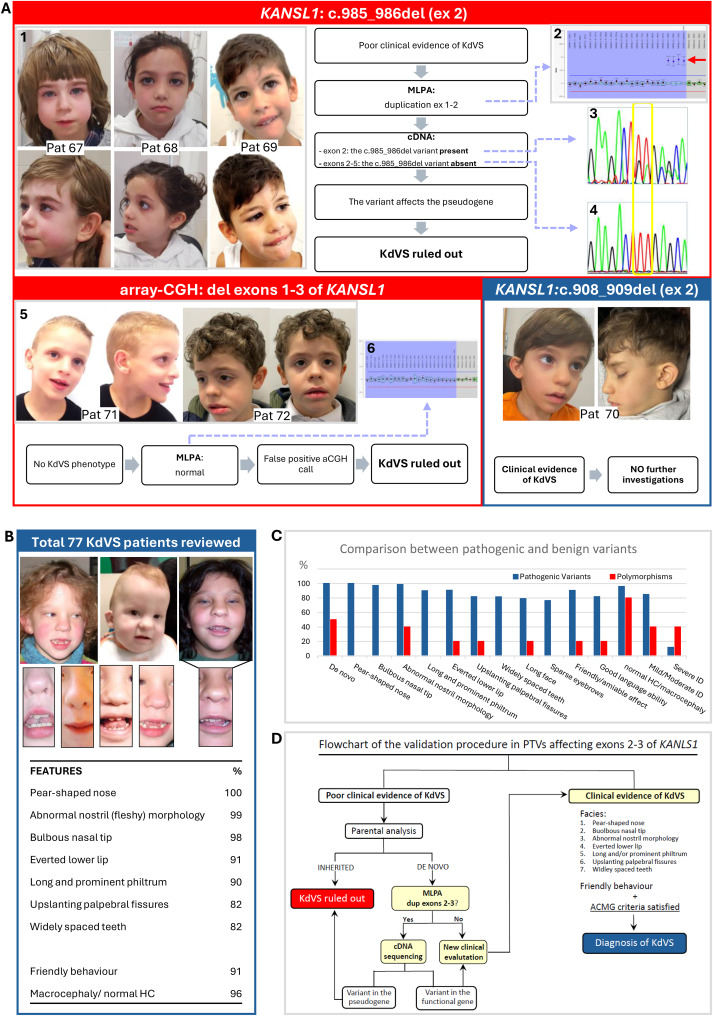
The same genomic variants in the first three exons of KANSL1 can be either benign or causative of Koolen-de Vries syndrome: Definition of a validation procedure


Koolen-de Vries syndrome (KdVS, OMIM #610443) is a neurodevelopmental disorder characterized by distinctive facial characteristics, intellectual disability, and friendly behavior. A full KdVS phenotype can be caused by a recurrent 17q21.31 deletion of 0.3–0.6 Mb, as observed in about 70%–80% of cases, or by predicted truncating variants (PTVs) in KANSL1 (KAT8 regulatory NSL complex subunit 1) in the remaining 20%–30% of patients.1,2 PTVs were reported to affect any coding exon of the gene from 2 to 15 in typical KdVS patients. However, polymorphic duplications including exons 1–3 of KANSL1 (NM_015443.4) can make the final diagnosis of KdVS challenging (Suppl.Notes).3 Since certain PTVs in the first three exons of KANSL1 were described either as pathogenic or benign, likely depending on whether they affect the functional or the polymorphic copy of the gene, a gene-specific strategy for validation is needed.
